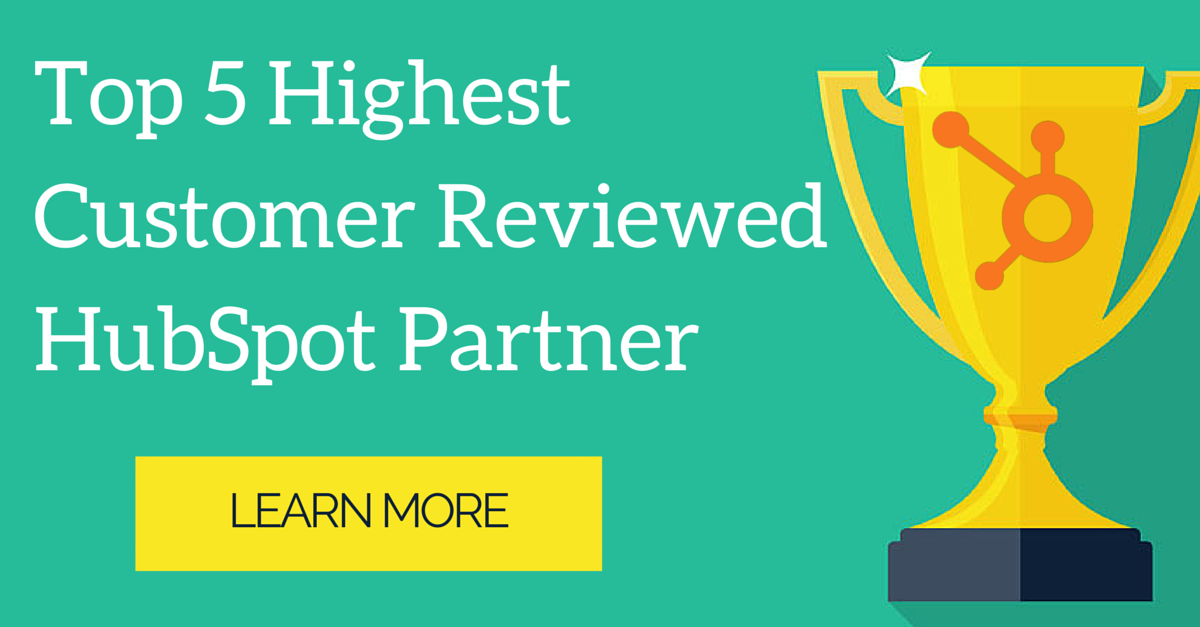In this episode we talk about Hüify's take on inbound marketing, how to leverage your time on Instagram (when you're spending an hour a day leveraging that platform) and how to build a community around a common interest—what platform to use and how to grow that.
Question: Alex asks, "How do you explain inbound marketing and Hüify's special approach to it?"
Answer: Great question Alex. Inbound marketing is definitely one of those terms that's become a buzzword in the industry, and just like content marketing.
Inbound marketing is a methodology that hinges on four principles: Attracting people, converting people, closing them and then delighting them once they become customers. The reality is in between converting and closing there's a lot of steps—a lot of things that take place that in itself is a huge part of the sales process of the sales funnel.
We focus everything from the bottom of the funnel up. We want to make sure when we start working with someone that if one other sales guys goes out tomorrow, they could bring in customers potentially within the next couple of days because they were equipped with the right information they knew what to say, they knew what to do and then you know how to categorize it.
Once you start there then you move on from, "Okay, the sales people know how to sell, they know how to track so how do we make sure that when leads come in they are handed off correctly between marketing and sales? How do I make sure that the sales team is getting the proper notifications and are able to respond in a very time efficient manner?"
We typically respond under five minutes when someone comes in as a lead. Therefore because of that short time frame we need to make sure that we are on top of the ball—we've got a really good notification system setup and we have enough time to get the notification, do a little bit of research on the lead and then hit hard.
Once you go from there then you start to go up the funnel, "Okay now we've got the hand off process; what does it look like to first capture leads? Do we have the appropriate resources on the site to get the right lead? Are we trying to give out guides that aren't really as relevant...do we have guides that are still top of mind? Or are we trying to use a download to sell someone on our product that they're probably not ready for yet? Content doesn't sell, sales people sell.
SEE ALSO: The Purpose of Inbound Blogging and 3 Major Pitfalls to Avoid
Obviously you could raise your hand and be like "Wow, what about this industry?" I'm sure there's many exceptions to the rule, however, across the board if you were selling something that's complex, if you have a software product that's difficult.
If it takes you two or three minutes to explain what you do, it's probably complex. You can't expect a guide to communicate actively what is it you do and the value that it brings to the customer and assume that's going to close the customer. Therefore, you use the guides as as a way to start the conversation and then you can tailor to that individual and structure it in a way that they would understand it. Then they can start to realize, "This is why I really need to work with this company" or "This is how I can relate because I have this similar problems".
Once you have those guides in place, then you got to figure out, "How are we able to market these guides? How are we able to market this landing pages that are around our site?" Forms on your site are the key to converting people and that's where blog articles, social media, e-mail, even advertising can come into play.
A lot of marketers will say advertising is outbound and never do it. But, if it's done correctly you can actually use advertising to guide people to the content a lot faster than hoping that they discover themselves.
That's a quick overview of the inbound process obviously that's tailored differently to every single customer we work with, we kind of take that process and lay out each client and depending on what areas are sticking out the most that need the most assistance with. Those are the areas we focus on but typically, we are starting from the bottom of the funnel and working our way up to the top.
Question: "Hey Josh thanks for taking my question. I'm really trying to push Instagram with my social media and I'm not looking for a quick cheap hack. What I'm looking for is the best way for me to use my time. I'm going to commit an hour of my time per day to work on Instagram. What is the best way to use that time? Is it going and liking other peoples things? Going to comment on other peoples things? Let me know what you think."
Answer: Roman another great question, very good!
That's cool that you get to dedicate that amount of time to that. I would say you should focus the most on what you think is going to provide you with the most value within that platform. As far as techniques, I will get to that in a minute. Figure out how to set it up so you can drive people back to what you want them to see.
We use Instagram to show our company culture so then we can draw candidates in and then the only link that's available on the Instagram page is our careers page. Our focus is to show off our company. If we wanted to pursue users we would focus on the areas that very motivated individuals are hanging out on Instagram, because that's the type of people we want to hire.
So the inverse is also true, if you're trying to focus on trying to draw people to your company to hire you then you should focus on where are pockets where they are, and think, "How can I start fostering conversation on other people's content that they're already viewing."
I would say if you're spending an hour a day I would break it up like this: I would a third of the time going out to other people's content (OPC). If you spend your time going in other people's content and commenting then continue to jump back in a thread and have conversations with people that are there. That will help you build up your audience a lot faster because you're leveraging the conversations that are already happening on that thread, to then draw people back to yourself.
You'll have to gauge how active of threads you want to join. If it has a ton of comments, you probably are going to get lost in the shuffle and it's going to be hard for people to see even what you tagged them in. If you can find something that has a good media of interesting topics, fair amount of comments but isn't overwhelming with comments and that would probably be a good place to start.
SEE ALSO: Social Media Marketing: 4 Important Questions to Ask
The other third I would just go inside there, accounts and interact with people photos. Comment, like, and start dialoguing with them. Don't just say nice photo every single time. Go a little bit deeper.
Then for the last third, I'd focus on analyzing your own feed, analyzing what's working, what's not, start following a lot of people and kind of test and see what works.
Question: Carolina Patriots ask, "What's the best social media channel for building a community around a common interest?"
Answer: Good question, this is tough. It really depends on what your audience is already doing. If for an example, I wanted to reach a bunch of CPAs, and I wanted to build a community around a common interest of accounting, that's going to limit my social media accounts that I'm going to focus on. Across the board as far as growing an audience and growing interaction, Snapchat has been crushing it for me recently.
I have some of the best connections and the best conversations I've ever had, with people on Snapchat right now. And yes I'm talking about business, I'm not talking about other things that the old scary man and media has put out over the years about what Snapchat is for and is not for.
Perfect example, I had one of my good connections ask for business reference. Talking about full long amount of text through Snapchat, and that's when it dawned on me, "Wow, Snapchat isn't just for playing around anymore, it definitely can be used for business." It is an awesome tool.
I would say right now, Anchor is a cool one you should check out. Anchor is basically Snapchat meets podcasting. So it's very short snippet podcasting form. It launched yesterday so it's super relevant. It's got a huge early growing community, that is continuing to add many many members every single minute, and there's a lot of really cool conversations that you can get in now, and you can search by hashtag, you can search by username or whatever, to find really meaningful discussions.
SEE ALSO: Social Media Training for Inbound Marketers
I really enjoy doing this video series, it's great to hear some of the questions that you all have. I cannot do this video series without you though, so please ask more questions questions on Instagram, on Twitter or in the comments below this video on YouTube.
That'll be really helpful for us to be able to find your questions, we want to make sure no question gets overlooked. But please continue to ask those questions so that way, we can feature you on the next episode.
![]()


 BACK TO ARTICLES
BACK TO ARTICLES 


